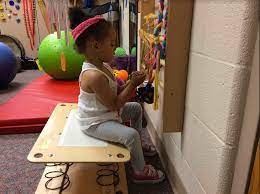Research
While there is not yet a large body of research on Active Learning, there are some sources available. Please contact us if you know of additional research that should be included here.
Specific to Active Learning

Boestrup, Annette Morell. (2016) Active Learning at Byhaveskolen, Denmark: An evaluation study of the Visual Communications Class’ concerning the 2015/2016 group of school-starters. (Translated from Danish)
Creech, Rhoda (2021). Teachers’ Reported Experiences Creating Active Learning Culture for Students with Comorbid Visual Impairment and Autism: A Phenomenological Study . Dissertation Manuscript Submitted to Northcentral University School of Education. Abstract.
Dunnett, J. (1997). Nielsen’s Little Room: Its Uses with a Young Blind and Physically Disabled Girl. Journal of Visual Impairment & Blindness, v91 n2 p145-50 Mar-Apr 1997.
Johnson, Kenalea; Griffin-Shirley, Nora; Koenig, Alan J. (2000). Active Learning for Children with Visual Impairments and Additional Disabilities. Journal of Visual Impairment & Blindness. Sep2000, Vol. 94 Issue 9, p584. 10p. 2 Charts.
Nielsen, L. (1991). Spatial relations in congenitally blind infants: A study. Journal of Visual Impairment & Blindness, 85(1), 11-16. http://psycnet.apa.org/record/1991-19089-001.
Nielsen, L. (1996). How the approach of guiding the hands of the visually impaired child can disturb his opportunity to build up strategies for tactile orientation, British Journal of Visual Impairment, 14(1), 29-31.
Related Research
Jude T. Nicholas, Annika M. Johannessen, Trees van Nunen, 2019. Tactile Working Memory Scale, Nordic Welfare Centre. Sweden.
Phone: +46 8 545 536 00 Email: info@nordicwelfare.org
Working memory, or the ability to keep something in mind for a limited amount of time is a central function in cognition. For persons with congenital deafblindness we need a bodily-tactile perspective on working memory. This manual gives a theoretical overview and presents a scale that can be used by professionals to identify and assess tactile working memory in persons with deafblindness, and design tools and strategies to ensure that these persons can develop and make use of all their potentials, both cognitively and linguistically.
Current Research
Koninklijke Visio (Royal Vision) in the Netherlands is currently involved in a research project together with the Academic Collaborated Centre for Profound Intellectual and Multiple Disabilities on the topic of Active Learning. Their research goal is: ‘We can distinguish the common elements of the Active Learning intervention in their relationship with the exploratory behaviour of a person with PIMD’. Currently this research is in the data collection phase with an expectation to finish this research in about a year before publishing an article in a scientific magazine. We hope to be able to share updates on this research.
